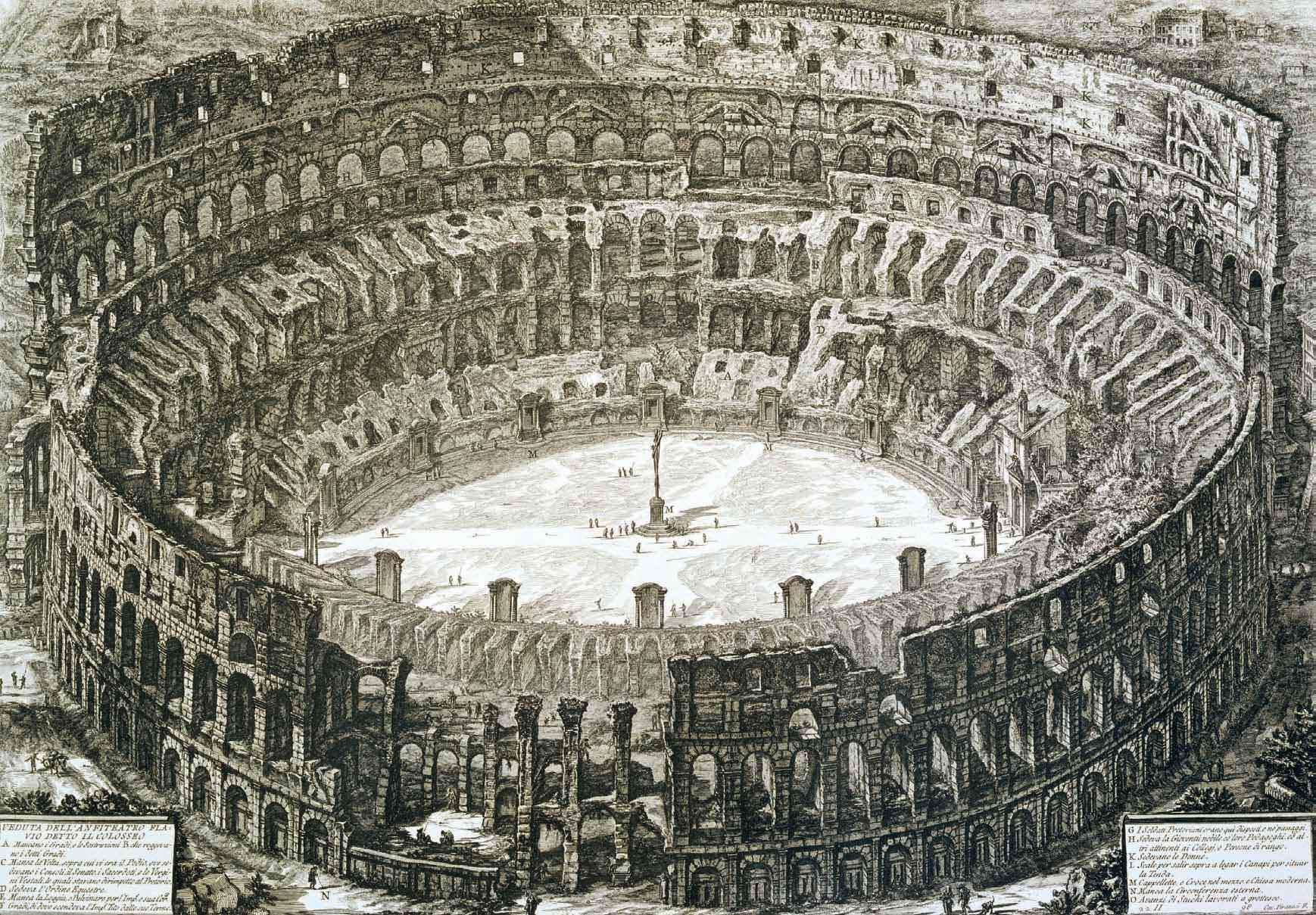Piranesi today, as seen by contemporary photographers: the exhibition at the Goethe House in Rome
On October 4, 1720, was born the giant of engraving Giambattista Piranesi (Mogliano Veneto, 1720 - Venice, 1778), one of the most significant figures in 18th-century art, whose 300th anniversary is being celebrated this year. The Goethe House in Rome, the only German museum outside Germany, joins the initiatives to commemorate the anniversary with a special comparison: some 40 etchings from its collection, Views of Rome and Capricci are juxtaposed with works by contemporary German and Italian artists, to show how, even today, Piranesi’s collective imagination and artistic teaching are intense. The exhibition, entitled Piranesi today, curated by Maria Gazzetti, director of the Goethe House, is a dialogue between today’s artists and architects with Piranesi.
On display are works by photographers, visual art artists, a writer and an architect: Gabriele Basilico (Milan, 1944 - 2013), Sebastian Felix Ernst (Berlin, 1987), Elisa Montessori (Genoa, 1931), Flaminia Lizzani (1963), Gloria Pastore (Naples, 1949) Max Renkel (Munich, 1966) and Judith Schalansky (Greifswald, 1980). In addition, the exhibition also displays one of Piranesi’s 964 autograph matrices preserved at theCentral Institute for Graphic Arts(Palazzo Poli). Among other things, the Palazzo hosted between 1854 and 1884 the headquarters of theAssociation of German Artists in Rome, whose archives and library are preserved in the Goethe House and to whom the recent exhibition Sources of Inspiration was dedicated.
Pronounced shadows, close-up glimpses, diagonal cuts, wavy skies and refined tones: Piranesi, Venetian by birth but Roman by adoption, shows us the classical ruins and ancient monuments of the Eternal City as shrouded in vegetation, populated with phantasmagorical figures. Piazza del Popolo, the Colosseum, the Pantheon, Piazza Navona, St. Peter’s Square, today as yesterday copies and reprints of the series made between 1747 and 1778 are a popular souvenir. “If we were to compare him to some other artificer we could not say except that he is the Rembrand of the ancient ruins,” wrote early biographer Ludovico Bianconi in 1779.
Johann Wolfgang Goethe is familiar with Piranesi’s work, which had “predisposed” him to the “colossal concept” of Roman monuments, but he does not always agree with the expressiveness of the views. In his Journey to Italy he recalls a visit to the ruins “of Caracalla, of which Piranesi has fabled us with such abundance of effects.” Piranesi’s is the gaze of an architect, a set designer, a connoisseur of Roman history, an artist educated in the perspective rigor of Venetian vedutismo. But it is also the gaze of a visionary, of a maker of utopias who recovered ancient forms through the excellence of engraving technique and point of view. The latter was the starting point for the well-known project-opera Piranesi Roma Basilico, commissioned in 2010 by the Giorgio Cini Foundation from renowned photographer Gabriele Basilico. Photographs that are again on display in Venice at Palazzo Cini (until Nov. 23, 2020). Giovanna Calvenzi, photo editor and Basilico’s widow, lent one of these shots for the exhibition at the Goethe House.
The central theme of the Roman exhibition is Piranesi’s fascination with today’s artists. Architect Sebastian Felix Ernst, a 2019-2020 fellow at theGerman Academy of Villa Massimo, studied Piranesi and visited with his students from Dessau the original sites of ancient and modern buildings in Rome. Using creative digital tools, the team documented them in 21 tables of Views that emphasize the speculative, interpretive and utopian character of Piranesi’s visions. An example of this elaboration will be on display in the exhibition at the Goethe House. For Flaminia Lizzani it is Piranesi’s “exasperated, pierced, contemplated, intensified interiority,” for others the exaltation of detail in monumentality that inspires them. Elisa Montessori, on the other hand, focuses on a Piranesian imagery that approaches pastiche. For Gloria Pastore, Piranesi’s exaggerations expanded the limits of imagination by allowing a fresh look at ancient ruins. Through his own works, his collection, and some recollections, Max Renkel recounts his relationship with the historical Piranesi and continuity in the world of the artistic image.
Excerpts from the short story Villa Sacchetti by Berlin-based writer Judith Schalansky(Verzeichnis einiger Verluste, Berlin, 2018, in Italian Inventario di alcune cose perdute, Milan, 2020) will also be integrated into this exhibition.
In this way, the exhibition questions the reactions of today’s artists to the ancient. On how they place themselves, with works partly created especially for the exhibition, in front of the difficult question of the dream of perfection and ruins and of an eternal present that seems today more than ever to want to erase past and memory.
The exhibition is open until January 17, 2021. For all information you can call +39 06 32650412, send an email to info@casadigoethe.it or visit the official website of the Goethe House.
Image: Giamattista Piranesi, View of the Colosseum (1776)
 |
| Piranesi today, as seen by contemporary photographers: the exhibition at the Goethe House in Rome |
Warning: the translation into English of the original Italian article was created using automatic tools. We undertake to review all articles, but we do not guarantee the total absence of inaccuracies in the translation due to the program. You can find the original by clicking on the ITA button. If you find any mistake,please contact us.





























